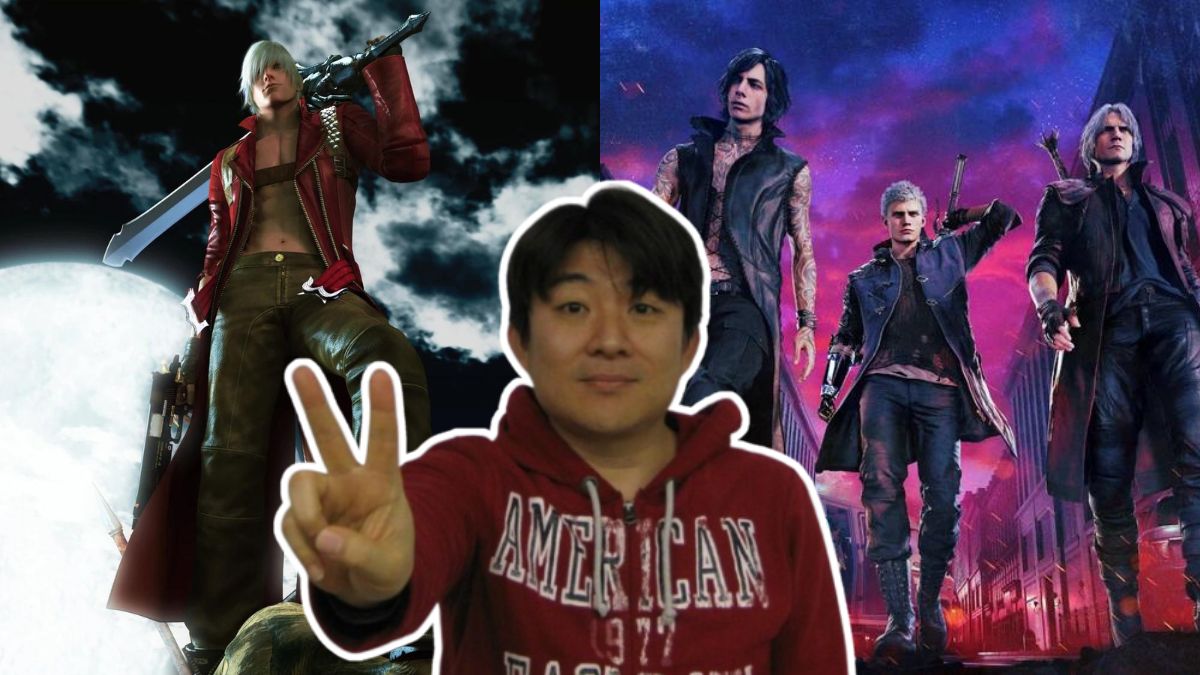Hideaki Itsuno recently announced his departure from Capcom, and Devil May Cry fans are absolutely heartbroken. After all, he’s a talented and influential developer who worked on multiple hit games: Apart from his impeccable work on the DMC franchise, he also directed cult classics like Rival Schools and Dragon’s Dogma.
Itsuno may not be the most renowned Capcom developer but he’s one of the most important ones, and his influence on the company should never be underestimated. He had both a fascinating career and a complex relationship with Capcom, and both should be studied from beginning to end.
His humble origins as a fighting game aficionado

Like most Japanese gamers of his generation, Itsuno was a passionate fighting game fan who Capcom hired in 1994 to work in their Arcade Division. He was obviously a big fan of Street Fighter II, but he also revealed that he played the competitor’s titles during this time: “I always loved fighting games, so it was always a certain fighting game with yearly installments. The one I played all the time was the ’94 edition”, he told Takayuki Nakayama in an interview, referencing the beloved SNK fighter The King of Fighters ’94.
He began working on multiple ports of Street Fighter II and even worked as a designer in Street Fighter Alpha until he eventually got the opportunity to direct new fighting game IPs, like Rival Schools and Power Stone. Itsuno applied his vast knowledge to every project he worked on: “Rival Schools was a game where we put a lot of effort into making sure it was easy to play.”
He and his team knew that, unlike other arcade fighters, Capcom was eventually going to port Rival Schools to home consoles. With this philosophy in mind, they developed the PlayStation 1 version in just three months, with the goal of selling 1 million copies. This was Itsuno’s first experience with home consoles, and it eventually changed the course of his entire career. He also carried his penchant for accessibility over to every subsequent project he worked on.
He transformed Devil May Cry into what it is today
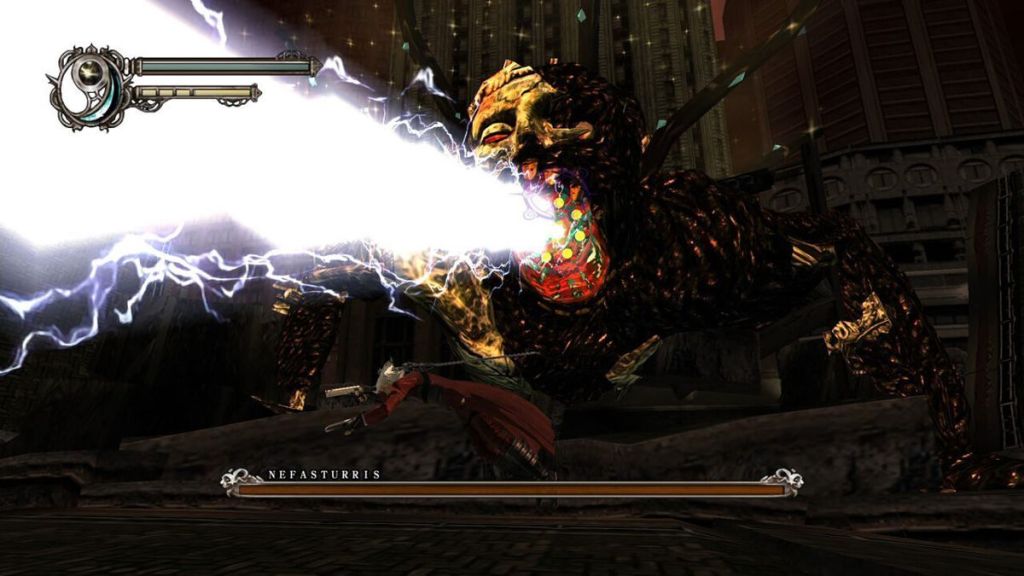
The gaming market was radically changing during the 2000s, and Capcom began taking developers from their Arcade Division and forcing them to work in home console games. In an outrageous decision, Capcom began its plans to make a sequel to their brand-new IP, Devil May Cry, without consulting Hideki Kamiya and his team. The company put Capcom Studio 1 to work on it instead.
The development of Devil May Cry 2 was quite rocky, and eventually, Capcom promoted Itsuno to director during the final months of development, replacing the original director of the game, who ultimately went uncredited. In the book Devil May Cry: 3142 Graphic Arts, Itsuno explains how Capcom practically forced him to direct: “The bosses came in and said, “Alright, do we have a director for DMC2?” Just as we were all thinking, “Nope. We actually don’t,” they said, “Okay. You do it.”
Itsuno tried his best and really put a lot of effort into trying to improve and refine DMC2 as much as he could. But his efforts weren’t enough to save what was already a low-quality product, so when Capcom finally released DMC2, fans and critics immediately panned it. “It’s strange to be a director as a helper in the first place. But the development of DMC2 was too short, and there were some parts that I felt I had left undone and hadn’t been able to be fully satisfied with”, he said later in an interview with Famitsu.
Devil May Cry 3 was just what Dante (and the franchise) needed

To the surprise of everybody, DMC2 was a financial success, which led Capcom to greenlight another sequel. Itsuno didn’t want this game to be his legacy and he just knew that he could create something truly special if he got to work on it from the beginning. “I even went so far as to ask directly, ‘Please let me do DMC3′”, he told Famitsu. Capcom accepted, and he immediately began recruiting his team.
He brought most of the DMC2 staff to work in the sequel, and they knew what they had to do: make Dante more energetic and youthful once again, so they decided to make DMC3 a prequel. Itsuno also brought over everything he learned from working in so many fighting games: “I decided to just go all out and include all the fun of combos in fighting games, so I was glad that I was able to compete in an area where I was confident.” His experience working on fighting games also influenced the way he utilized music in his games: “Ever since the “Rival Schools” series, I’ve made a note of directing scenes with the music in mind,” he explained in DMC: 3142 Graphic Arts.
Devil May Cry 3: Dante’s Awakening quickly became a critical and commercial success. Audiences endlessly praised it for going back to the series’ dynamic and challenging roots while also giving Dante his charming personality back. Itsuno and his team didn’t just make yet another excellent DMC game, but they also brought new life into the franchise. And this was just the beginning.
Devil May Cry 4 introduced a new protagonist at the worst moment

In DMC: 3142 Graphic Arts, Itsuno revealed how he became the director of the next installment in the series: “Someone else was given control of DMC4, but one of the bosses said, “Dealing with the new PS3 hardware is going to be tough, so we need someone more experienced to take charge. You do it.” I wasn’t particularly against the idea, so I accepted the position.
Itsuno and his team knew they needed to do something bold and unexpected to keep the Devil May Cry franchise fresh and interesting. That’s why they came up with a new devil hunter named Nero. He always had great plans for this new character, but he did fear that he was going to get extremely negative feedback for “replacing” Dante, so he was included as well: “It was a gamble for us to even introduce a new character,” he revealed in an interview with Games Radar.
Dante was created by Hideki Kamiya, so it makes sense for Itsuno to prefer the new characters he personally conceived. “I like Vergil and Nero. I have an appreciation for Dante, too, of course, but I feel less of a connection with him because he’s not a character I created myself”, he said in DMC 3142 Graphic Arts.
Devil May Cry 4 would eventually get a mixed-to-positive reception. Over the years, there was a rumor among fans that Capcom was to blame for this, as they either rushed the development of the game or forced Itsuno to cut a lot of content, but the director never officially confirmed it. Even though it sold over 1 million copies by the end of its first fiscal year, DMC4 didn’t meet Capcom’s high expectations, especially because its development had a bigger budget than usual.
He left DMC behind in order to work on his magnum opus
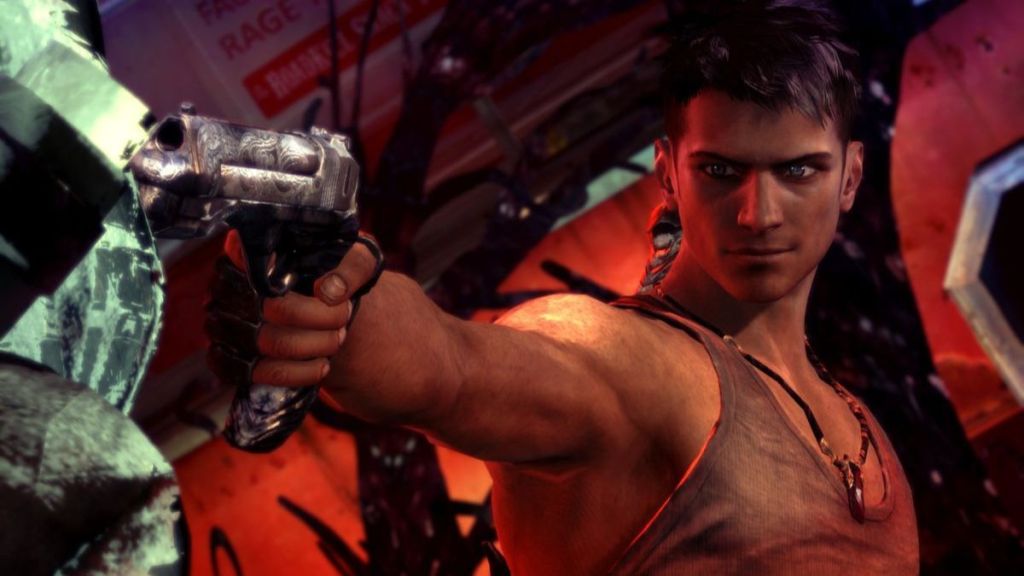
During the late 2000s, Capcom decided to follow a brand-new direction, as the company began to prioritize the development of Western-styled games, which were much more popular and profitable at the time. Capcom chose Ninja Theory to develop a brand-new Devil May Cry reboot and even assigned Itsuno as a supervisor and advisor for this new team. The final result was DmC: Devil May Cry, a solid albeit extremely controversial game.
As much as Itsuno obviously cherished the Devil May Cry series, he never felt that the series was his creation, as he explained in DMC: 3142 Graphic Arts: “When explaining my relationship with DMC to people, I like to say that I’m not so much a parent to the series as I am a foster parent. Or maybe “stepmother” is more appropriate. That usually seems to get the point across pretty well.”
He did have his own idea for a unique action RPG with an innovative Pawn mechanic that he came up with even before he joined the DMC2 team: “After (development of) CAPCOM VS. SNK 2 ended, I was actually in the middle of planning to launch an original RPG,” he said about his new IP.
So, when Capcom asked him for an idea for a large-scale project that could make millions, he pitched what would eventually become Dragon’s Dogma, and Capcom greenlit the project. Why did the company approve of it? While executives clearly had confidence in Itsuno based on his impeccable previous work, it was mainly because he convinced them that this was going to be a western-styled RPG, and he even used titles like The Elder Scrolls IV: Oblivion, Fallout 3, and Fable II as examples. This fit perfectly with the company’s aforementioned new direction.
The surprise success of Dragon’s Dogma
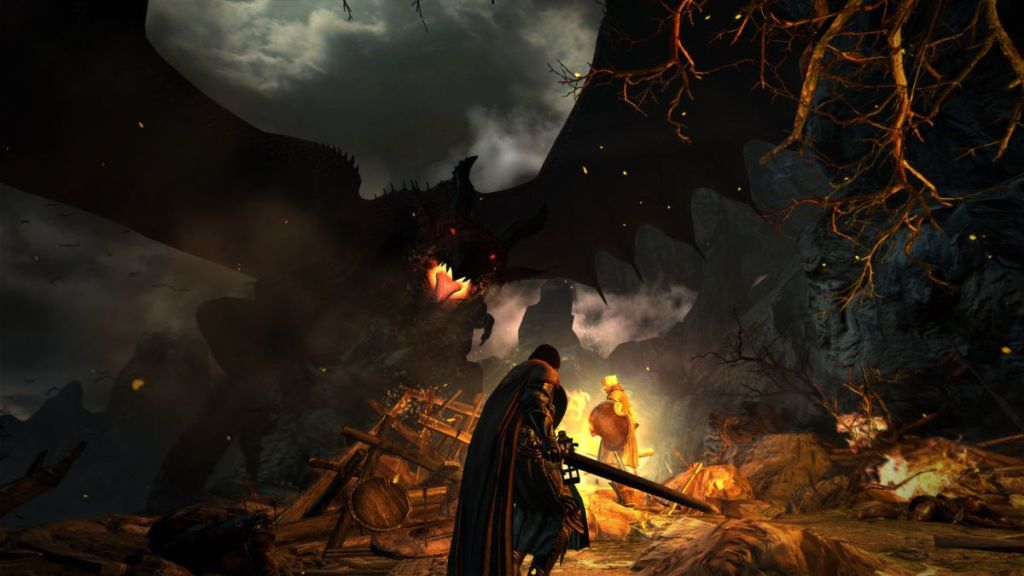
Itsuno began working on this new game with the help of his DMC4 team, and it took them three years to complete it. Thanks to the evolution of home console technology, he was finally able to make his idea into a reality. Dragon’s Dogma quickly became a surprise hit because gamers criticized most action RPGs for their lackluster combat at the time, so its dynamic combat system and epic boss fights helped it become a standout title.
The critical and commercial success of Dragon’s Dogma cemented the IP as a new RPG icon, and it led to the creation of an expanded version, a spinoff and even an animated adaptation for Netflix. Years later, Hideaki Itsuno would state: “The (game) that was the biggest success in my mind, the one I’m most proud of, that’s probably Dragon’s Dogma.” He even wanted to work ON its sequel almost immediately, but he didn’t know that DMC would need him again very soon…
Devil May Cry needed its savior, once again

In 2015, the success of Devil May Cry 4: Special Edition and DmC: Definitive Edition proved to Capcom that there still was a shared interest in the iconic hack-and-slash franchise. Itsuno decided to pitch Devil May Cry 5, and it worked quite well: “The reactions from everyone around me were positive, and the production discussions went smoothly,” he told Dengeki Online in an interview. But Itsuno said on Twitter/X that DMC5 had been in development since 2014, so they likely had plans to revive the franchise much earlier.
In 2013, in an interview for the book DMC: 3142 Graphic Arts, Itsuno said: “That’s why even now, the DMC4 staff is clamoring to make a sequel starring Nero. Of course, a sequel with Dante wouldn’t be bad either”. These ideas would eventually come to fruition in DMC5, a game that featured Dante and Vergil, but Nero was ultimately the main protagonist of the adventure.
Itsuno proudly exclaimed “DMC IS BACK!”, and everybody went crazy
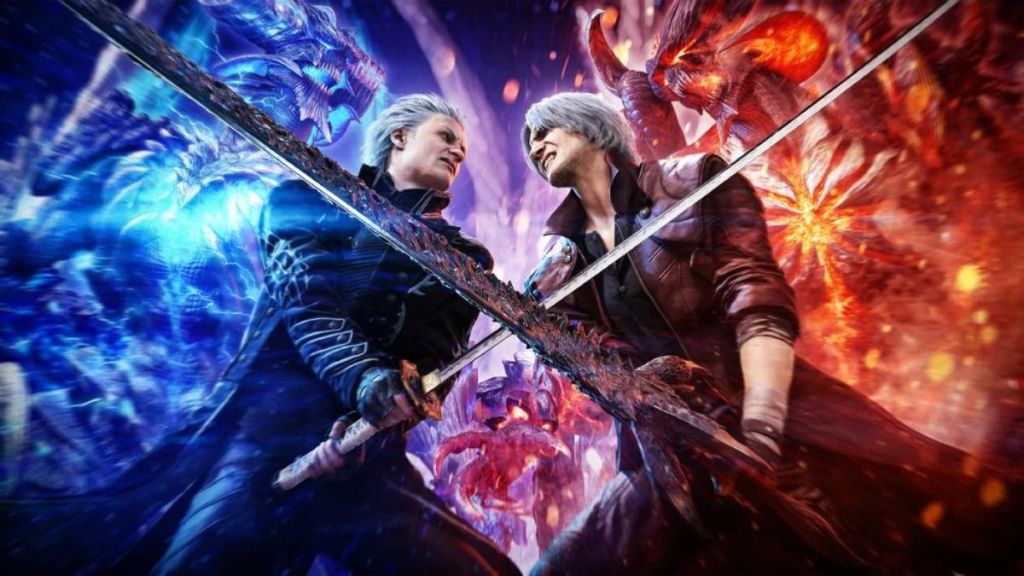
He had a concrete idea of what he wanted to make from the get-go, which was helpful in creating a more streamlined development process. Just like they did with DMC3 years before, the team brought back what made the series so beloved in the first place but also implemented fresh new ideas. Surprisingly, DmC also inspired them. “In terms of the flow of the series, after DMC4 there was DmC: Devil May Cry, and after that there was DMC5. The staff had the feeling that they wanted to surpass both works in terms of image creation, and they studied them”, Itsuno told Dengeki Online.
Capcom revealed DMC5 during Xbox’s E3 2018 conference with a fantastic trailer. Hideaki Itsuno went up on stage and proudly exclaimed, “DMC IS BACK!” He was right: When the game was released months later, it immediately became a critical and commercial success once again. It seemed that everything Itsuno and his team touched turned into solid gold.
Everybody praised Devil May Cry 5 for its many positive qualities, and it seemed that, after years of unfounded negativity, the franchise was back to its roots and was more relevant than ever. Not only did DMC5 satisfy longtime fans, but it also brought in a slew of new fans. And all of them were eager to see where the franchise was going next.
He finally got the chance to work on that Dragon’s Dogma sequel
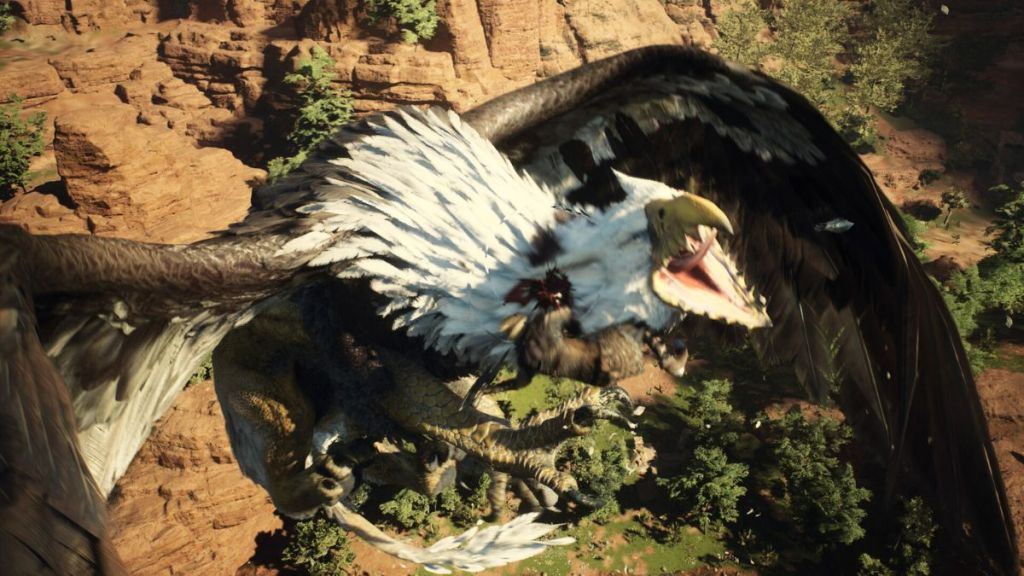
Before DMC5 launched, Itsuno had to make a difficult choice: In an interview with VG247, he said he went to Capcom’s founder Kenzo Tsujimoto and said, “Look, I want to make either DMC5 or Dragon’s Dogma 2 next”, to which Tsujimoto replied “Okay, do whatever you want. Do whichever one you want,’ so he prioritized DMC5 and began working on Dragon’s Dogma 2 immediately after that. His main goal with this sequel was to expand on everything he did in the original game, including ideas and mechanics he originally had to scrap.
This resulted in Dragon’s Dogma 2, released this year by Capcom. Unfortunately for Itsuno, however, the game got a divisive reception due to stuff that was entirely out of his control. The mishandling of microtransactions and optimization issues contributed to the game’s negative reputation. Dragon’s Dogma 2 is still a solid action RPG, but it was nowhere near as well received as Itsuno’s previous projects.
Hideaki Itsuno’s undeniable legacy

One should never underestimate Itsuno’s contributions to Capcom and gaming in general, especially for someone who started his career as a mere fighting game fan. He may not have created Devil May Cry, but he saved the IP not once but twice, cementing it as one of the most successful and beloved hack-and-slash franchises. And if that wasn’t enough, he also managed to develop a unique Western-styled RPG in Japan with Dragon’s Dogma, ultimately proving that he’s also capable of creating successful new IPs from the ground up.
In his countless interviews and press releases, Itsuno told multiple stories about how the executives at Capcom almost always let him have the final say on which game he would develop next. So it’s evident that he was not just a mere employee for the company but that Capcom actually trusted his vision because it was sure he was always going to develop a quality product. Capcom still hasn’t responded to Itsuno’s departure, but it is definitely going to feel his absence.
When he left, Itsuno stated: “I will start developing a new game in a new environment. I hope to create fun, beautiful games that are as memorable as, or even more memorable than, the ones I have created so far” which tells fans everything they need to know about the future of his career: He’s going to keep making incredible video games, regardless of which company he’s working for.
